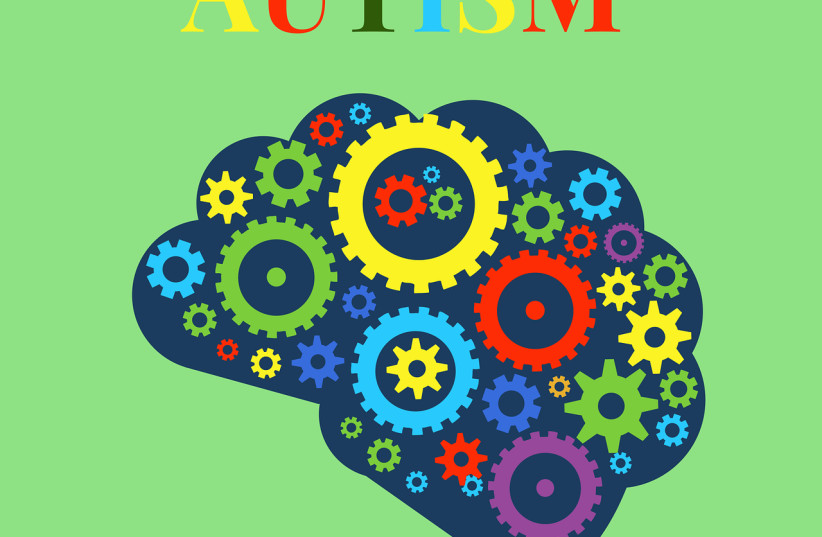A new study undertaken at the University of Haifa has found that among children with autism spectrum disorders (ASD) that result from genetic mutations, there is an accelerated development of cortical neurons even in the fetal stage. This is followed by a rapid deterioration in the nerve cells, leading among other phenomena to low connectivity.
The study found a recurrence of this phenomenon among children with autism originating in four different types of genetic mutations. It was published in the prestigious journal (part of the Nature group) under the title “Early maturation and hyperexcitability is a shared phenotype of cortical neurons derived from different ASD-associated mutations.”
ASD was first defined by Leo Kanner in 1943 and named “early infantile autism” as a disorder independent from the psychotic disorder of schizophrenia and described 11 children with social, biological, and emotional abnormalities such as the inability to relate to others or objects in a traditional way, an anxious and obsessive desire for consistency, early eating difficulties and hearing problems.
Recently, more symptoms entered the category of autistic-like behaviors such as attention deficit hyperactivity disorder (ADHD), poorly integrated verbal and non-verbal communication, abnormalities in eye contact, hyper or hypo-reactivity to sensory input, repetitive body movements, and more.
“Neurons that develop at a normal rate acquire appropriate protections for the very complex activity they perform, including defenses against the penetration of ions and neurotransmitters, which are liable to be toxic. According to our findings, it is certainly possible that the accelerated development of neurons causes a deterioration that may influence the development of autism,” explained Dr. Shani Stern of the university’s neurobiology department who authored the author of the study.

“It is certainly possible that the accelerated development of the neurons causes a deterioration that may lead to impairment in brain function at the later stages,” Stern continued.
85% of instances of autism cases are termed 'sporadic'
About 85% of instances of autism cases are termed “sporadic,” meaning that no genetic cause was found, and there are no other instances of autism in the family. The remaining 15% of cases are caused by mutations in various genes. Research into cases caused by gene mutations is often based on the use of mice models. The research begins after birth, and the neurons in the brain have already completed several developmental stages.
Stern’s studies use an innovative technological method of reprogramming adult cells from white blood cells and turning them into induced stem cells that can later be turned into another type of cell – in the case of the present study, nerve cells. These neurons created carried the specific genetic load of the person from whom they were taken and could be monitored even prior to the “birth” stage.
The present study was undertaken by Stern and her research team including research students Yara Hussein and Uthkarsh Tripathi from the neurobiology department in collaboration with Prof. Ronen Spiegel and Dr. Tali Garin-Shkolnik from the Center for Rare Diseases at Emek Medical Center in Afula. Its goal was to compare the development of cortical neurons – those in the outer layer of the brain – among children with autism caused by gene mutations to the development of neurons among their siblings who do not have autism, and who effectively served as the control group.
The children who participated in the study had mutations in the UBTF, GRIN2B, and SHANK3 genes, as well as an abnormal number of segments in the chromosome region 7q11.23. The choice of cortical neurons was due to the fact that it is known that many of the changes in the brains of children with autism are associated with changes in the cortex.
The results of the study showed that among children with autism, regardless of the genetic mutation, there was an accelerated development of the cortical neurons even in the stage analogous to the fetal stage and during the first months of life, so even at this early stage. The neurons were regarded as “mature” – they created action potentials, had large, strong ionic currents, and even began to form active neural networks.
However. among the control group at this stage of the development, the neurons did not create action potentials, their electric currents were very limited, and they did not form any neural networks.
At the stage when the cortical neurons of the children without autism reached the stage when they began to create action potentials and networks, the neurons of the children with autism already began to deteriorate, as reflected, among other phenomena, in low connectivity. That means that the cortical neurons of children with autism developed rapidly and then deteriorated rapidly.
Stern explained that the early development of the neurons may contribute to this deterioration. “Cortical neurons perform very intricate and complex actions. These may be impaired, for example, by the penetration of ions and neurotransmitters that are liable to be toxic for the neurons; in normal development, they acquire protective mechanisms during the early stages when they are still inactive. It is certainly possible that the accelerated development led them to begin to become active before they had these protective mechanisms, and naturally this is liable to lead to damage.”
In the lab, Stern and her team members are now trying to find compounds and drugs that can slow this rapid development in order to create protections for these neurons. The fact that these mutations showed similar results in terms of the speeded-up development and deterioration of neurons suggested that this may be a characteristic phenomenon of autism in general. “The results of our study show that children with autism that are usually characterized with a late development actually begin with accelerated development. The fact that these findings were common to various mutations in different genes, and even in different chromosomes, suggests that this phenomenon may be characteristic of the brains of children with autism,” she concluded.
